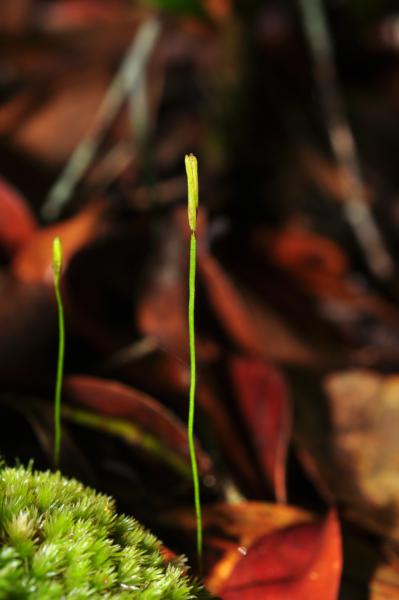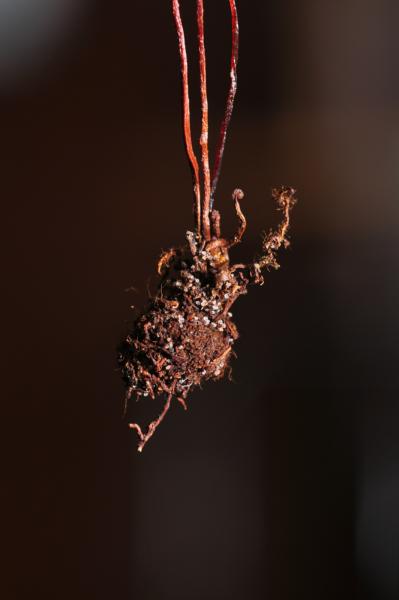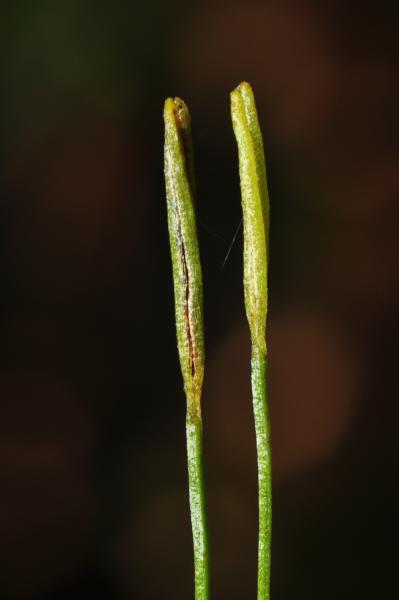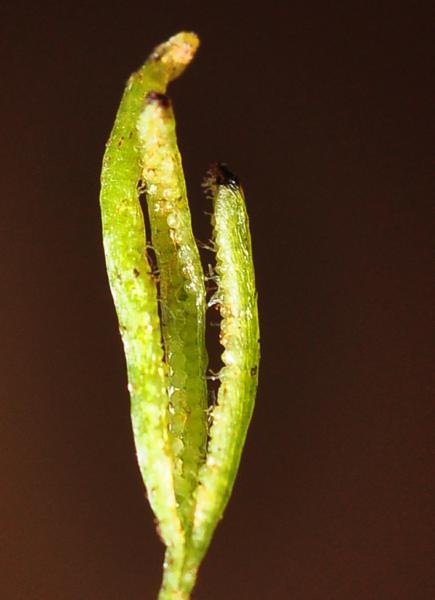
Actinostachys wagneri (Selling) C.F.Reed
Family
Schizaeaceae
Nomenclature
Actinostachys wagneri (Selling) C.F.Reed, Bol. Soc. Brot. 21: 131. 1947; Jaman & Umi Kalsom, Fl. Pen. Malaysia, Ser. I, Ferns & Lycoph. 1: 111, map 1. 2010. – Schizaea wagneri Selling, Svensk Bot. Tidskr. 40: 278, f. 8-11. 1946; Holttum, Rev. Fl. Malaya ed. 1, 2: 52. 1955 ['1954']; Holttum, Fl. Males., Ser. II, Pterid. 1: 44, f. 4e-g. 1959; Holttum, Rev. Fl. Malaya ed. 2, 2: 52. 1968; Lindsay et al., Thai For. Bull. (Bot.) 40: 14. 2012. – Type: Papua New Guinea, Admiralty Islands, Manus Island, Summit of Mt Tjajiak, Grether & Wagner 4177, November 1945 (holotype : UC [barcode UC701236]; isotypes; K [barcode: K000408661], S).
Schizaea paucijuga Holttum, Gard. Bull. Singapore 11: 267. 1947. – Type: Malaysia, Kedah Peak, Haniff SFN 1098 (holotype : SING).
Description
Terrestrial or sometimes appearing to be epiphytic at base of trees; rhizome short-creeping, producing fronds close together, less than 1 mm diameter, with a few thick, stiff, wiry roots c. 0.2 mm diameter; root hairs to 3 mm long; apex of rhizome densely covered in coarse brown multiseptate hairs up to 1.5 mm long. Fronds monomorphic, erect, simple, linear, (3–)7.5–16.5(–20) cm long, less than 0.7 mm wide, reddish brown and terete or triquete at base, gradually becoming green and very narrowly winged above the base (therefore, no distinct stipe); basal portion sometimes sinuous and/or horizontal (especially if growing through leaf litter or moss); midrib rather broad and slightly to prominently raised on lower surface of winged portion but indistinct above, other venation, if any, obscure; with 2-celled dark glandular hairs sparse throughout; stomata on the lower surface only, widely spaced, in 1 row on each side of the midrib and close to it. Sporangia produced only at the frond apex in a digitate cluster of (2–)3–4(–5) fertile lobes; fertile lobes linear, slightly twisted together when young but untwisting as they mature and separate, (3.5–)7–15(–19) mm long, less than 0.7 mm wide, with entire margins, venation of each lobe a single broad medial vein slightly raised below but indistinct above, with 2-celled dark glandular hairs above. Sporangia ovoid, sessile, each with a large apical annulus, usually arranged in 2 rows (very rarely with short sections of 3 rows) the entire length of the lobes; long filiform transparent reddish-brown paraphyses protruding between sporangia, 2–4 times longer than sporangia, flat, twisted, ribbon-like with rounded ends and all originating from the vein. Spores monolete, bilateral , finely verrucose.
Distribution in Thailand
PENINSULAR: Phangnga.
Wider Distribution
Peninsular Malaysia, Singapore, Borneo, Moluccas, New Guinea, NE Australia.
Ecology
In Thailand, Actinostachys wagneri is only known from beach forest at sea level but elsewhere it has been reported from a range of forest types and altitudes (eg. to 440 m in Peninsular Malaysia and to 1600 m in New Guinea). Plants are usually terrestrial in leaf litter or humus, in moss or on rotten logs but they can sometimes appear to be epiphytic in moss at the base of trees. Actinostachys wagneri is reported to grow with Actinostachys digitata in New Guinea and with both Actinostachys digitata and Schizaea dichotoma in Peninsular Malaysia and Singapore.
Similar species
Actinostachys digitata (L.) Wall. ex C.F.Reed.
Proposed IUCN Conservation Assessment
Least Concern (LC). Although this species has been collected only once in Thailand and is known from relatively few localities in Peninsular Malaysia (Kedah, Perak and Johor) it is very widespread and not under any known threat.
Voucher specimens - Thailand
Phutthai, Sridith & Chanthanaotrapint 247, Phangnga, Tai Muang, Khao Lampi-Hat Tai Muang National Park (PSU).
Habit
Rhizome
Fertile section
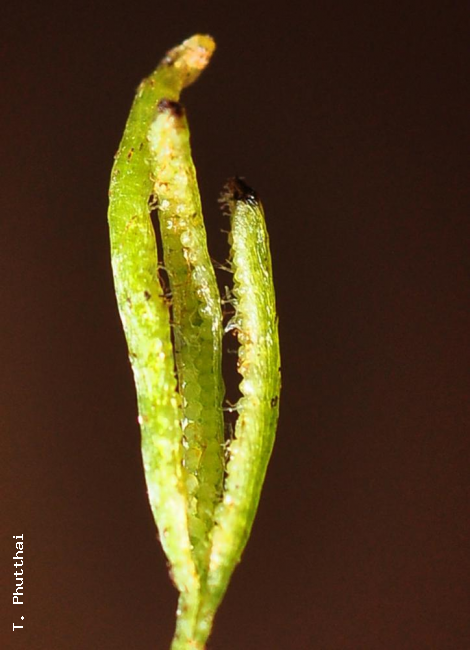
Sori
Site hosted by the Royal Botanic Garden Edinburgh. Content managed by Stuart Lindsay, Gardens by the Bay, Singapore and David Middleton, Singapore Botanic Gardens. Last updated 24 January 2012
